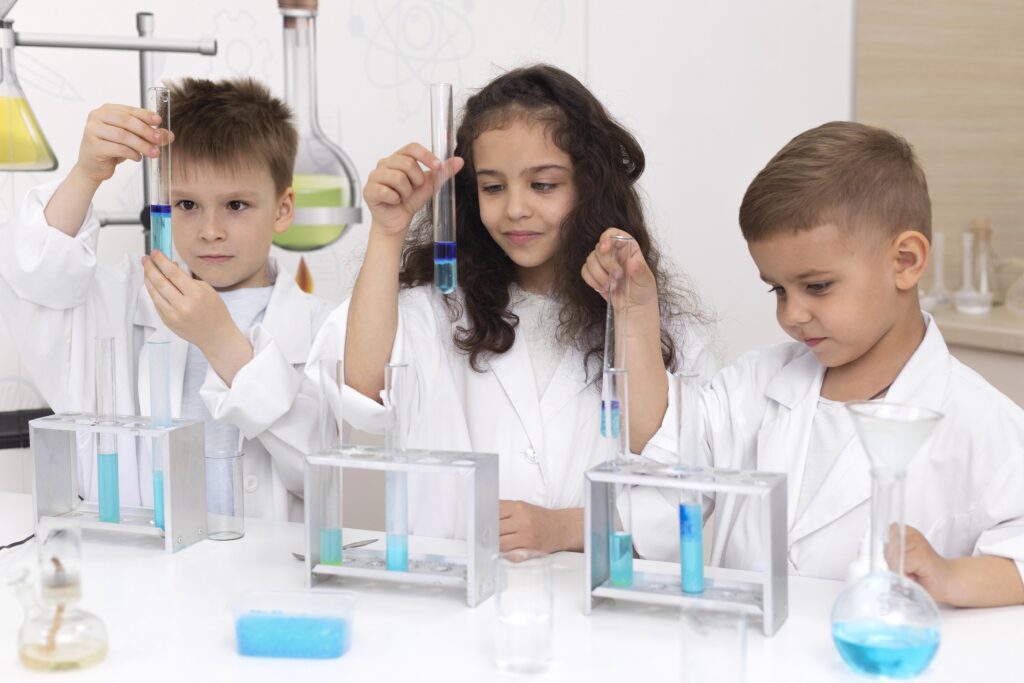Hands-on learning is learning via practical experience. Kinesthetic learners, who benefit from examples, are most compatible with this style of learning. This kind of learning is synonymous with experiential learning, with persons immersing themselves in a subject to acquire knowledge. Students acquire knowledge more effectively through active participation in activities rather than through passive reading or attending lectures.

Examples include conducting lab experiments in a chemistry lesson or composing a poem in an English class. This learning method can enhance retention of information and provides pupils with an opportunity to hone their problem-solving abilities.
Benefits of hands-on learning
Enhance learners’ retention by offering chances to link course concepts to practical real-world scenarios. Here are strategies that assist learners in internalizing new information: Prevent the segregation of course material.
Initiating critical thinking involves considering multiple perspectives. It is crucial to not solely rely on information heard or read as factual, as individuals, including academics, may have their own perspectives, intentions, and prejudices. When learning, inquire about the evidence that the source provides to back up their argument.
- Problem-Solving: An Incremental Method
- Determine the issue? Defining the issue that needs to be addressed is the best beginning point.
- Identify the underlying causes. Generate many solutions. Select the most effective solution.
- Develop and execute your solution. Evaluate the effectiveness of your solution.
Examples of hands-on learning activities
Puzzle contests are competitive events where participants aim to solve a puzzle within a specified time frame and achieve the highest score compared to other players.

Nature collage Inspire youngsters to engage with nature with these enjoyable educational activities for kids. Creating a nature collage enables children to investigate their environment and utilize their discoveries to produce aesthetically pleasing artwork.
Pizza Fraction Activity This pizza activity is excellent for instructing on fractions. Excellent for teaching fractions by using toppings to demonstrate halves, quarters, and wholes that may be cut and attached.
Magnetic Fishing Game The creation of this magnetic fishing game was straightforward using craft foam and magnets. Excellent for developing fine motor skills and identifying colors.
Counting Beads Games The typical abacus is capable of doing addition, subtraction, division, and multiplication, as well as extracting square roots and cubic roots. The beads are controlled using either the index finger or the thumb of one hand.
Creating homemade playdough is a fantastic sensory activity that engages my children for extended times. Engaging in playdough activities stimulates my children’s creativity. I prefer kids to engage in creativity rather than using technology devices.
The floating egg science experiment is a cost-effective method to aid children in comprehending teachings on density. You only require eggs and seawater.
Real-world application of hands-on learning
Students should be given chances to collaborate, convey ideas, and connect their learning in school to their daily lives to enhance their transferable abilities. Vocational education emphasizes learning to provide essential job skills to students.
Best practices for implementing hands-on learning
- Start by determining the learning goals and objectives for your class.
- Seek opportunities to establish linkages with real-life situations.
- Include activities that encourage students to actively interact with the topic.
- Promote students to inquire and delve into their individual interests.
Challenges of hands-on learning
- Absence of defined goals.
- Inadequate readiness.
- Disinterest. Be the inaugural one to contribute your unique experience.
- Insufficient feedback. Be the inaugural one to contribute your unique experience.
Tips for educators to promote learning
Supportive learning process can affirm the existence of individuals and promote engagement and participation being productive with student feedbacks, Be accessible Provide review sessions outside of class. Share previous exams on a class platform.
Building Curiosity Curiosity is a potent motivator that compels us to investigate the unfamiliar, question our beliefs, and uncover novel concepts.
Continuous feedback Receiving feedback from students can offer teachers significant insights into the efficacy of classroom strategies.

